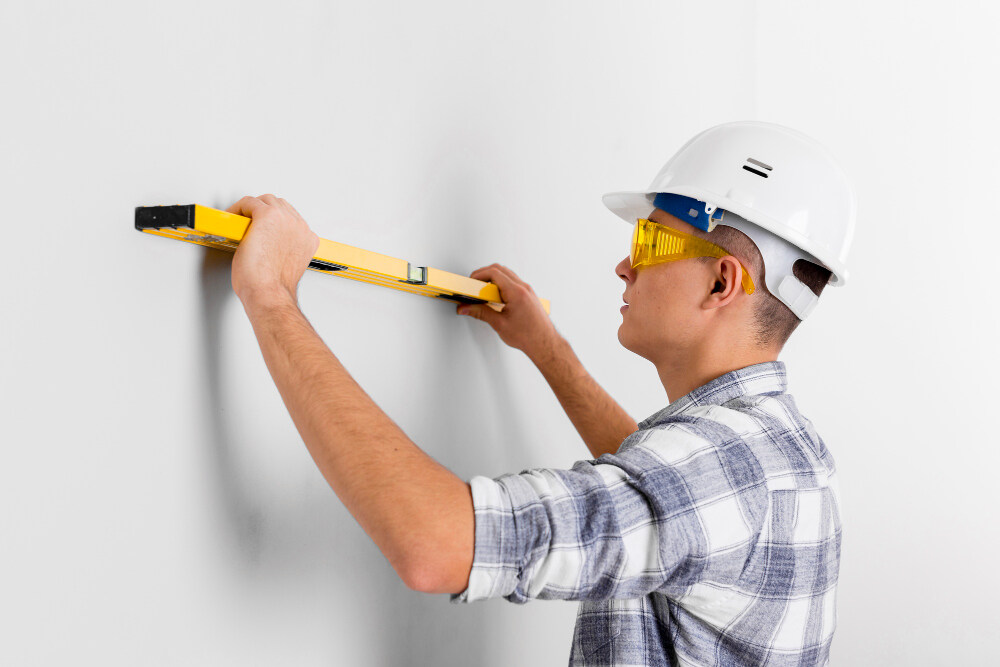When you’re tackling drywall projects, making clean, precise cuts is a must for a professional-looking result. Whether you’re installing new drywall, cutting out sections for electrical boxes, or making other adjustments, learning how to use a drywall saw for clean cuts will save you time and effort. A drywall saw is designed specifically for these tasks, helping you create smooth, accurate cuts without damaging surrounding areas.
In this guide, I’ll walk you through everything you need to know about how to use a drywall saw for clean cuts. With over 20 years of experience in drywall installation and repair, I’ll share the best practices, tools, and techniques to help you achieve professional-grade results.
Choosing the Right Drywall Saw for Clean Cuts
Before diving into the actual process of how to use a drywall saw for clean cuts, it’s essential to understand the different types of drywall saws available and their uses. The saw you choose can make a big difference in how clean and precise your cuts will be.
1. Keyhole (Jab) Saw
The keyhole saw, also known as a jab saw, is one of the most commonly used tools for drywall cutting. Its pointed tip allows you to “jab” the blade into the drywall to start your cut without needing a pre-drilled hole. This saw is great for making small to medium-sized cuts, such as openings for electrical outlets or light switches.
2. Drywall Circle Cutter
A drywall circle cutter is perfect for creating clean, round cuts, such as those needed for recessed lighting or speaker installations. This tool allows you to score the drywall in a circular shape, which you can then cut out using a jab saw or a utility knife for smooth edges.
3. Reciprocating Saw
If you need to make larger, faster cuts, such as when removing entire sections of drywall, a reciprocating saw is a good option. However, it’s less precise than manual saws and can cause rougher edges, making it more suitable for demolition than fine, detailed work.
4. Rotary Tool
A rotary tool, like a RotoZip, is excellent for making detailed, precise cuts. It’s perfect for cutting out around electrical boxes, light fixtures, or any areas that require intricate designs. This tool provides a smooth finish and is faster than using a manual saw.
Tools and Materials for Clean Drywall Cuts
In addition to your drywall saw, there are a few essential tools and materials that will help you achieve the cleanest cuts possible. Here’s a quick list:
- Measuring tape
- T-square or drywall square for straight lines
- Utility knife for scoring the drywall
- Pencil or chalk line for marking cut lines
- Stud finder to avoid cutting into framing
- Safety gear (dust mask, safety glasses)
Being well-prepared with these tools will ensure your drywall cutting process goes smoothly and results in clean, professional-looking cuts.
Step-by-Step Guide: How to Use a Drywall Saw for Clean Cuts
Now that you’ve got your tools and you understand the types of drywall saws, let’s get into the step-by-step process of how to use a drywall saw for clean cuts.
Step 1: Measure and Mark Your Cut
The first step in making clean cuts is accurate measurement. Use a tape measure to determine the size and location of your cut. Then, use a pencil or chalk to mark the outline directly onto the drywall. A T-square or drywall square will help you mark straight lines, ensuring that your cuts will be precise.
Pro Tip: Always double-check your measurements before cutting. Small mistakes can lead to larger headaches later in the process.
Step 2: Score the Drywall with a Utility Knife
Before you start sawing, lightly score the surface of the drywall along your marked lines using a utility knife. Scoring helps guide your saw and prevents tearing the paper surface, which can result in ragged edges.
Step 3: Start Cutting with Your Drywall Saw
Insert the tip of your drywall saw into one of the corners of your marked area. If you’re using a jab saw, jab the pointed tip directly into the drywall to create a starting point. Then, use smooth, back-and-forth motions to cut along your marked line.
For the cleanest cuts, make sure to keep the saw at a slight angle and apply steady pressure. Take your time—rushing can cause uneven edges or damage to the drywall.
Step 4: Use a Rotary Tool for Precision Cuts
For smaller, more intricate cuts, a rotary tool is your best option. Follow the marked lines carefully, keeping a steady hand to ensure accuracy. Rotary tools are especially useful for cutting around outlets, light fixtures, or any other detailed areas.
Step 5: Sand the Edges for a Smooth Finish
After cutting, you may notice that the edges are slightly rough. Use a drywall rasp or fine-grit sandpaper to smooth out the edges, ensuring a clean fit. Smoothing the edges helps your drywall piece fit seamlessly during installation and reduces the chances of cracking or chipping.
Common Mistakes to Avoid to get a Clean Cut with your Drywall Saw
Even with the best tools, mistakes can happen. To make sure you get the best results when learning how to use a drywall saw for clean cuts, here are a few common mistakes to avoid:
- Forcing the Saw: Don’t try to push the saw through too quickly or apply too much pressure. This can cause the drywall to tear or leave jagged edges.
- Not Scoring First: Failing to score the drywall before cutting can result in tearing the paper surface, leading to rough edges.
- Cutting Too Close to Framing: Always use a stud finder to ensure you’re not cutting too close to the framing, which can damage the structure of the wall.
- Ignoring Safety Precautions: Drywall dust can be hazardous if inhaled, so always wear a mask and safety glasses when cutting.
Tips on Using a Drywall Saw for Clean Cuts
If you’re aiming for the cleanest possible cuts, here are some additional tips to help you refine your technique while mastering how to use a drywall saw for clean cuts:
Tip 1. Use a Sharp Blade
A dull blade can cause jagged edges and make your job harder. Ensure that your drywall saw is sharp and in good condition before starting any project.
Tip 2. Cut with Gentle, Controlled Strokes
Apply gentle pressure and avoid rushing. Slow, controlled strokes will give you a cleaner, more precise cut.
Tip 3. Score Deep Enough
When you score the drywall, make sure the score line is deep enough to guide your saw effectively. A shallow score can result in tearing or chipping.
Tip 4. Minimize Dust
Drywall cutting creates a lot of dust, which can affect visibility and accuracy. If possible, use a vacuum attachment or slightly dampen the drywall before cutting to reduce dust.
FAQs on How to Use a Drywall Saw for Clean Cuts
What type of saw is best for clean drywall cuts?
A jab saw is great for most cuts, but for precise, intricate work, a rotary tool is ideal. A drywall circle cutter works well for perfectly round holes, such as those for recessed lighting.
Can I use a reciprocating saw for drywall?
A reciprocating saw can be used for larger cuts, but it may leave rough edges. It’s better suited for demolition work than for making clean, precise cuts.
How do I prevent rough edges when cutting drywall?
To prevent rough edges, always score the drywall first, use a sharp blade, and apply controlled pressure. Sand the edges after cutting to smooth them out for a cleaner finish.
Conclusion: Achieving Clean Cuts with a Drywall Saw
Learning how to use a drywall saw for clean cuts is a valuable skill for anyone working with drywall, whether you’re a DIYer or a professional. With the right tools and techniques, you can achieve precise, smooth cuts that make the installation process easier and result in a more polished final product.
Take your time, follow the steps outlined in this guide, and practice the techniques until you feel confident. With experience, you’ll be able to tackle any drywall project with clean, professional-looking results.

